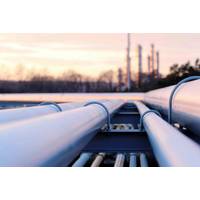Italy's energy regulator has signalled it may rein in the high investment returns driving profits for some of the country's biggest power firms under a review of the sector.
The AEEGSI watchdog published the first document in its review of power transmission and distribution late on Friday, setting out proposals that will be debated up to November and form the basis of new regulations coming into force next year.
Keenly watched by investors for its potential impact on earnings, the document gave no hard numbers but laid down draft guidelines including extending a regulatory period due to start in 2016 from four to six years, reforming the way incentives are set and fixing new efficiency targets.
"This regulatory document does not provide a lot of detail ... but it seems clear the AEEGSI is becoming tougher," said Javier Suarez, utility analyst at Mediobanca Securities.
Power grid operator Terna and gas grid player Snam , both state-controlled, generate the lion's share of their income from regulated returns for investments made to develop their networks.
Utility Enel, which owns more than 90 percent of Italy's distribution network, raises more than 20 percent of its core earnings from distribution, and large regional utilities A2A and Hera also have distribution businesses.
"Regulation has been lax in recent years and the companies have had some good pickings. It's time returns were reined in," a wholesale energy trading head said, asking not to be named.
In the last five years Terna shares have risen 26 percent compared to a 17 percent fall in the Italian blue chip index .
Italy has one of Europe's most generous regulatory frameworks for investment returns, the costs of which are paid for through consumer bills.
High taxes and costly energy incentive schemes make Italian power prices for small businesses some of the highest in Europe.
Credit Suisse said on Monday AEEGSI's idea for power distribution was to promote the development of smart grids, while the mechanisms for power transmission would take into account the benefits of the investment, making them more selective.
"We expect 2016 earnings per share (at Terna) to fall by 15 percent, following a cut in allowed return from 6.3 percent to 4.6 percent," the broker said.
Terna and Enel declined to comment on the document.
(By Stephen Jewkes; editing by John Stonestreet)




